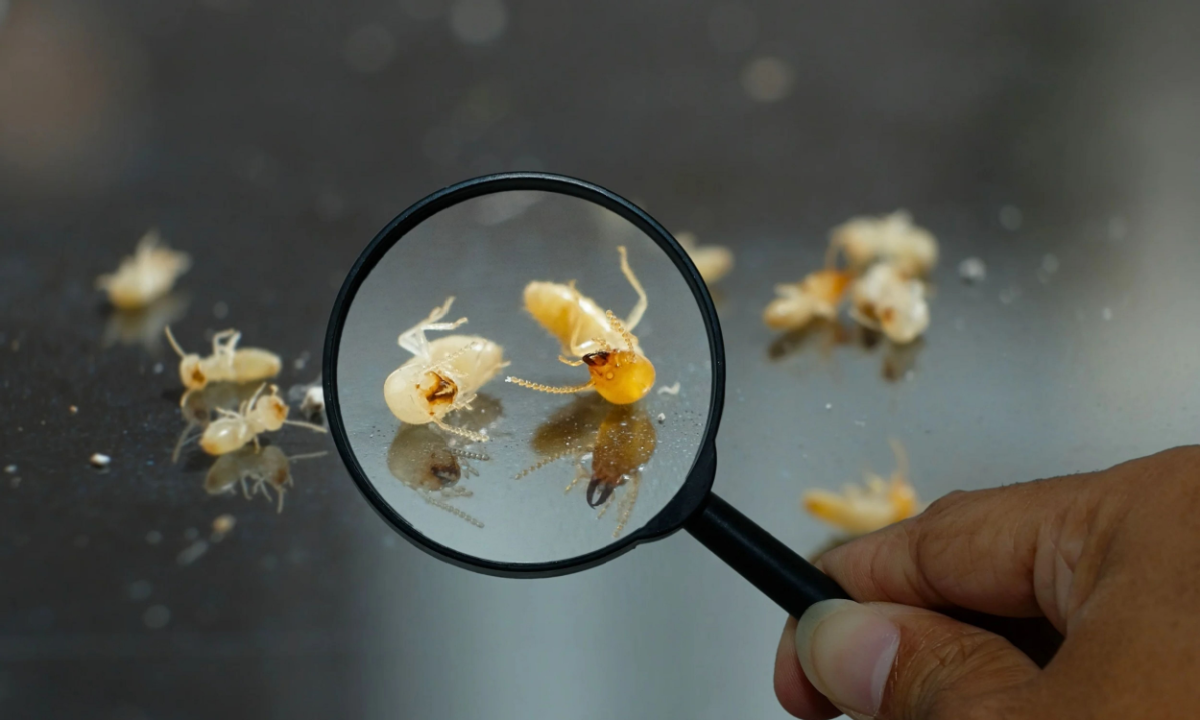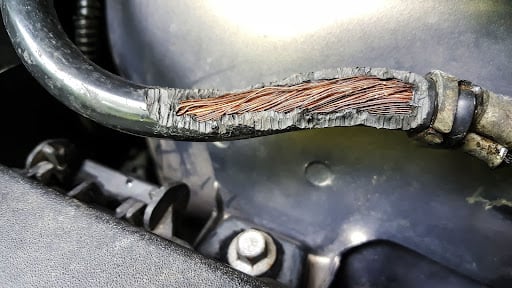What’s that scurrying across your back fence? Or across the pipes under your home at night? What’s been tearing into your vegetable garden, consuming everything before you even have the chance to pick it?
What’s been leaving disgusting droppings throughout your home? Most likely, you’re dealing with a rodent infestation.
Several rodents live throughout the state of New Jersey, causing untold damage for homeowners. In the following article, we’ll provide a comprehensive list of New Jersey’s most common rodents, the signs to look out for around your home, and tips for rodent control to keep your New Jersey home rodent-free.
Signs of a Rodent Infestation
Spottings
This may seem obvious, but the most surefire way to confirm a rodent infestation is to see it with your own two eyes. Whether you catch a glimpse of a single rodent in/around your home or find a nest in a secluded location on your property, you can always expect to find more.
Odd Pet Behavior
Many breeds of cats and dogs are natural-born hunters, instilled with the desire to go after rodents. Dogs such as terriers, dachshunds, and other miniature breeds were actually bred to hunt rats and other small rodents, ridding barns, garages, and storage facilities of pests.
As a result, the presence of rodents in your home will naturally pique the interest of these breeds and most common house cats. If you note a drastic change in your pet’s behavior, there’s a good chance they may have picked up on the scent of a rodent.
Droppings
Another physical sign of a rodent infestation is the presence of droppings, most commonly along their frequent trails of travel. Common places to find droppings include under furniture, along walls, and in other inconspicuous areas.
Bite Marks, Holes, and Gnawing Noises
Most rodents possess incredibly strong teeth, allowing them to easily burrow their way into homes, food containers, and even through walls. As a result, one of the most common signs of a rodent infestation is bite marks across wires or holes being burrowed in drywall around your home.
Additionally, you may hear the distinct sounds of chewing, gnawing, and scratching during quiet hours, which could signify rodent presence.
 Identifying Rodents: 10 Types Commonly Found in New Jersey
Identifying Rodents: 10 Types Commonly Found in New Jersey
Several types of rodents can commonly be found throughout New Jersey, with some posing a bigger danger to your health and belongings than others. We’ll look at the 10 most common rodents, their identifiers, and the risk they pose to your home and family.
1. House Mouse
The common house mouse is one of the most prevalent rodent species in New Jersey, easily identifiable by its small 3 to 4-inch long body, 1 to 2-inch long naked tail, large ears, and dusty-brown color. These compact rodents can generally be found nesting in walls or other tight spaces near a food supply, coming out nightly to feed.
While not aggressive, house mice can spread disease and illness. Additionally, they can cause damage to your home by contaminating insulation with urine and feces or chewing through electrical wires, PVC pipes, and other building materials.
2. White-Footed Mouse
Like the common house mouse, the white-footed mouse is a small, relatively shy rodent. White-footed mice, also known as wood mice, aren’t quite as common in urban areas, though they’ve been known to take shelter in the ground-level walls of buildings.
This species is identifiable by its ~3.5-inch long body, brown fur, white underbelly, and feet. Like the house mouse, the white-footed mouse is a vector for disease and can cause similar damage to structures, especially if infestations are allowed to grow.
3. Deer Mice
Deer mice are an overall larger species than the other mice on this list, though not as large as common rats. They generally possess dark brown bodies, white underbellies, and large ears. While they tend to avoid humans, they’re commonly viewed as one of the primary carriers of the Hantavirus–a disease that, while harmless to rodents, can cause serious illness and even death in humans.
For this reason, deer mice infestations should be eradicated as soon as possible.
4. Roof Rats
These large, invasive rodents are traditionally found in tropical regions, though it’s not uncommon for them to be found near New Jersey ports after hitching a ride on traveling ships. Roof rats, also known as “ship rats,” are the same species responsible for spreading the bubonic plague, an illness still in existence today. They’re typically characterized by their 7 to 9-inch long bodies, extremely long tails, black fur, white underbellies, and large eyes/ears.
In addition to spreading illness, these large rodents can have devastating effects on food storage due to their large size, insatiable appetite, and taste for fruits, vegetables, and nuts.
5. Norway Rats
Arguably the most common rodent in the United States, the Norway rat is a voracious pest, easily identifiable by its 7 to 10-inch long body, relatively short tail, brown or gray fur, white underbelly, and small ears. Norway rats, also known as “barn rats,” “sewer rats,” or “brown rats,” are also known carriers of disease, making them a threat to you, your family, and your pets.
6. Voles
Voles are the smallest rodent on the list, measuring only 2 to 3 inches in length. While voles rarely enter homes, they’re known to wreak havoc on gardens and plant life. Voles are also vectors for disease, though due to their lack of human contact, they are generally only viewed as a nuisance pest.
7. Squirrels
The most common type of squirrel found in New Jersey is the Eastern gray squirrel, a large, tree-dwelling squirrel. They are easily identifiable by their gray/brown color, white underbelly, and relatively large size.
Like other rodents, squirrels can cause damage to building materials like plastic pipes and electrical wires. They’re also known to spread similar diseases; as such, it’s important to keep your distance from squirrels in the wild.
8. Lemmings
While not as common as the other rodents on this list, lemmings are known to inhabit regions of New Jersey. These small, black, and tan rodents are known for their random population swells and declines, with populations booming to excess in some years and dropping to near extinction the next.
These rodents are omnivorous, causing significant damage to gardens and crops if given a chance. Like other rodents, they’re also capable of spreading disease, though they’re not likely to get close enough to humans or structures to cause any issues.
9. Chipmunks
The Eastern Chipmunk is another common rodent in the Northeast, primarily inhabiting wooded areas. These solitary rodents are identifiable by their small, squirrel-like appearance, tan bodies, and black/white striped markings traveling from their heads to their tails.
Chipmunks tend to spend their time in caves rather than homes, though they have been observed chewing wires and extracting insulation from walls to build nests. Additionally, their burrows can create an eyesore for those with unkept yards displacing dirt mounds as they build their elaborate tunnels.
Chipmunks are known to carry a variety of diseases and as such, can pose a threat to your pets and family.
10. Muskrats
Quite possibly the oddest rodent on the list is the muskrat–a large, semi-aquatic rodent identifiable by its medium to dark brown fur, short, thick coat, and a long, semi-flattened, scaly tail.
These rodents threaten young vegetation and river bank erosion due to their affinity for aquatic plants and the large burrows they build. Like other rodents, muskrats can carry disease, though you aren’t likely to find one in your home!
Rodent Prevention
Due to the potential for structural damage and the high probability of disease, it’s important to keep your home as rodent-free as possible. Unlike a bed bug infestation that can be treated chemically, rodents require you to eliminate food sources and seal off entry points to maintain a rodent-free environment.
Several methods exist to prevent infestations which, if followed to a tee, should help to keep these fuzzy little vermin out of your house.
Keep a Clean Home
Rodents invade homes with a bountiful supply of food and multiple hiding places, allowing their presence to go undetected while they scavenge your pantry. As such, making your home as uninhabitable for rats as possible is important.
So clear any debris and do your best to keep food scraps and other garbage to a minimum.
Seal Food Sources
Rodents are scavengers, always in search of the next meal. If your pantry is loaded with easy-to-access boxes, open containers, and stored veggies/fruit, there’s a good chance rodents may find them. Instead of leaving food exposed, do your best to pack away dry goods in durable containers for safe storage.
Likewise, keep all garbage sealed to keep animals out of your trash, including rodents.
Identify and Close-Off Potential Entry Points
If your home is infested with rodents, it’s important to pinpoint where and how they’re getting in. Inspect your home for potential holes in exterior walls, torn screens, improperly sealed crawl spaces and attic vents, and even loose-fitting siding around pipes. Rats and mice can fit through even the most seemingly insignificant spaces, so be generous with the caulking!
If all else fails, don’t hesitate to contact your qualified, local pest control experts below. Anchor Pest Control understands the difficulties of eradicating rodents better than anyone. With a slew of available treatment options and plans, your home will be rodent-free in no time.



